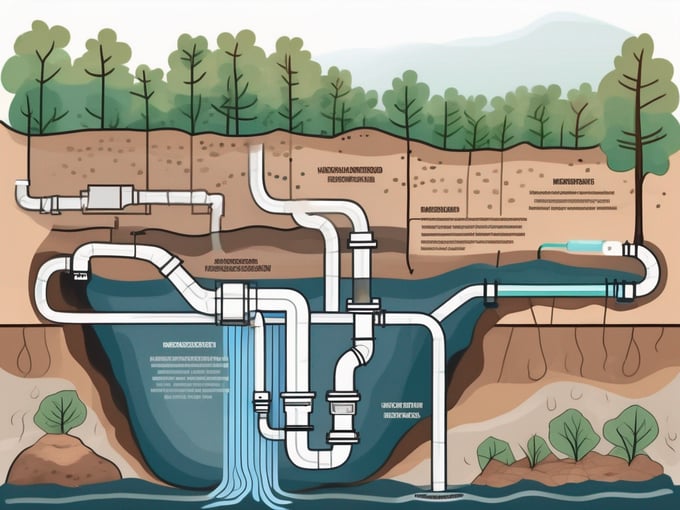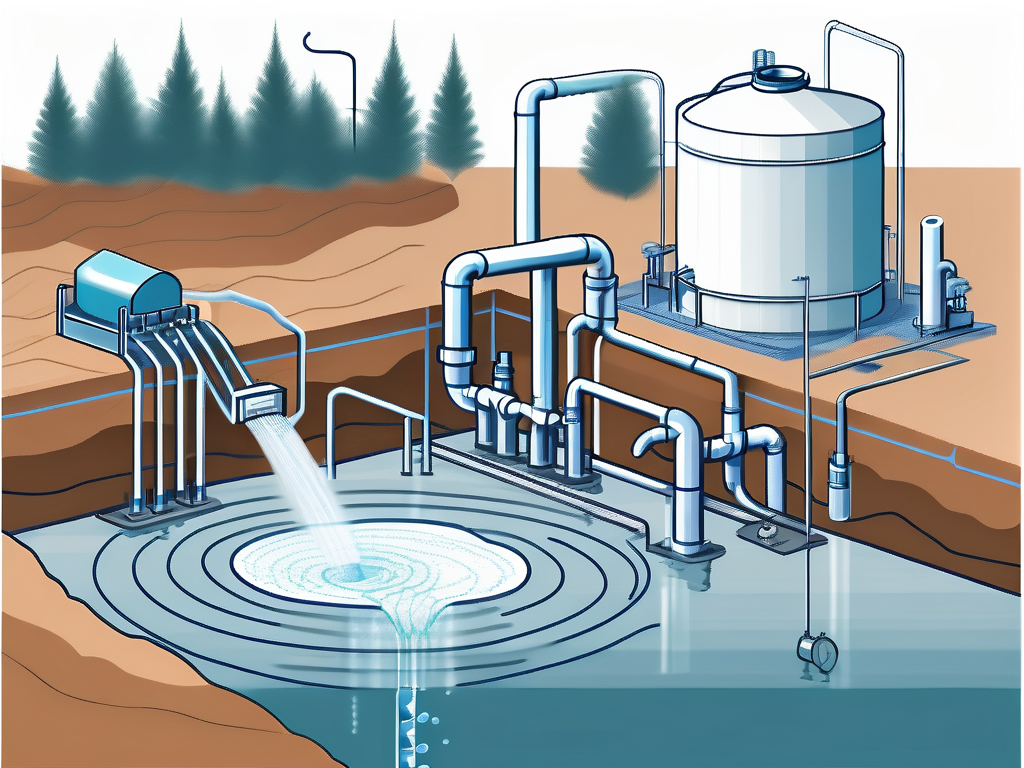
Groundwater Recharge: Wastewater Treatment Explained
Groundwater recharge, also known as aquifer recharge or deep drainage, is a hydrologic process where water moves downward from surface water to groundwater. This process is critical in replenishing our water sources, and it plays a significant role in wastewater treatment. This article will delve into the intricate details of groundwater recharge, its relation to wastewater treatment, and the various methods and technologies involved.
Wastewater treatment is a vital process that ensures the safety and cleanliness of water supplies. It involves the removal of contaminants from wastewater to produce an effluent that can be returned to the water cycle with minimal environmental impact. Groundwater recharge is a key component of this process, as it allows treated wastewater to be safely reintroduced into the environment.
Understanding Groundwater Recharge
Groundwater recharge is a natural process that occurs when rainwater or other surface water infiltrates the ground and replenishes underground water sources, known as aquifers. This process is crucial for maintaining the water balance in a region and ensuring a sustainable supply of water for various uses.
However, groundwater recharge is not a uniform process. It varies depending on several factors such as the permeability of the soil, the presence of vegetation, and the intensity and duration of rainfall. Understanding these factors is crucial for managing and enhancing groundwater recharge.
The Role of Soil Permeability
Soil permeability is a key factor that influences groundwater recharge. Permeable soils, such as sandy or gravelly soils, allow water to infiltrate quickly and deeply, enhancing groundwater recharge. On the other hand, impermeable soils, such as clayey soils, limit water infiltration and reduce groundwater recharge.
Soil permeability is not a fixed property; it can be influenced by various factors such as soil compaction, the presence of organic matter, and soil moisture content. Therefore, managing these factors can help enhance groundwater recharge.
The Impact of Vegetation
Vegetation plays a significant role in groundwater recharge. Plants and trees intercept rainfall, reducing runoff and promoting water infiltration into the soil. Moreover, their root systems create channels in the soil, enhancing its permeability and facilitating groundwater recharge.
However, vegetation can also reduce groundwater recharge. Plants and trees transpire water, returning it to the atmosphere and reducing the amount of water available for recharge. Therefore, the type and density of vegetation can significantly influence groundwater recharge.
Groundwater Recharge in Wastewater Treatment
In the context of wastewater treatment, groundwater recharge is a crucial process for the safe disposal of treated wastewater. It involves the intentional infiltration of treated wastewater into the ground, where it percolates through the soil and replenishes groundwater sources.
This process not only disposes of treated wastewater in an environmentally friendly way, but it also provides a valuable source of water for various uses. However, it requires careful management to ensure the safety and sustainability of groundwater sources.
Methods of Groundwater Recharge in Wastewater Treatment
There are several methods of groundwater recharge in wastewater treatment, each with its own advantages and disadvantages. These methods can be broadly categorized into surface methods and subsurface methods.
Surface methods involve the application of treated wastewater onto the ground surface, where it infiltrates into the soil. These methods include basin infiltration, sprinkler irrigation, and flood irrigation. Subsurface methods involve the direct injection of treated wastewater into the ground, using techniques such as injection wells and infiltration galleries.
Challenges and Considerations in Groundwater Recharge
While groundwater recharge is a valuable process in wastewater treatment, it presents several challenges. These include the risk of groundwater contamination, the need for adequate treatment of wastewater, and the potential impact on groundwater levels.
Groundwater contamination can occur if treated wastewater contains residual contaminants that can infiltrate into groundwater sources. Therefore, adequate treatment of wastewater is crucial before it is used for groundwater recharge. Additionally, excessive groundwater recharge can lead to a rise in groundwater levels, causing waterlogging and other problems.
Technologies for Groundwater Recharge in Wastewater Treatment
Several technologies are available for enhancing groundwater recharge in wastewater treatment. These technologies aim to increase the efficiency of water infiltration, ensure the safety of groundwater sources, and manage the potential impacts of groundwater recharge.

These technologies include advanced treatment processes for removing residual contaminants from wastewater, soil amendments for enhancing soil permeability, and monitoring systems for tracking the impact of groundwater recharge on groundwater levels and quality.
Advanced Wastewater Treatment Processes
Advanced wastewater treatment processes are crucial for ensuring the safety of groundwater recharge. These processes remove residual contaminants from wastewater, reducing the risk of groundwater contamination.
These processes include membrane filtration, activated carbon adsorption, and advanced oxidation processes. Membrane filtration removes particulate matter and microorganisms from wastewater, while activated carbon adsorption removes organic contaminants. Advanced oxidation processes, on the other hand, break down complex organic compounds into simpler, less harmful substances.
Soil Amendments for Enhancing Soil Permeability
Soil amendments can be used to enhance soil permeability, increasing the efficiency of groundwater recharge. These amendments include organic matter, sand, and gravel, which improve the soil's structure and increase its water-holding capacity.
However, the use of soil amendments requires careful management to avoid potential negative impacts. For example, excessive use of organic matter can lead to nutrient leaching and groundwater contamination. Therefore, soil amendments should be used judiciously and in accordance with best management practices.
Monitoring Systems for Groundwater Recharge
Monitoring systems are crucial for managing groundwater recharge in wastewater treatment. These systems track the impact of groundwater recharge on groundwater levels and quality, providing valuable data for decision-making and management.
These systems include groundwater monitoring wells, which measure groundwater levels and collect samples for quality analysis. Other monitoring tools include soil moisture sensors, which track the moisture content of the soil, and weather stations, which provide data on rainfall and evapotranspiration.
Conclusion
Groundwater recharge is a crucial process in wastewater treatment, providing a safe and sustainable method for disposing of treated wastewater. However, it requires careful management and the use of advanced technologies to ensure the safety and sustainability of groundwater sources.

With the increasing demand for water and the growing challenges of water management, the role of groundwater recharge in wastewater treatment is likely to become even more important in the future. Therefore, understanding and managing this process is crucial for ensuring the sustainability of our water resources.



